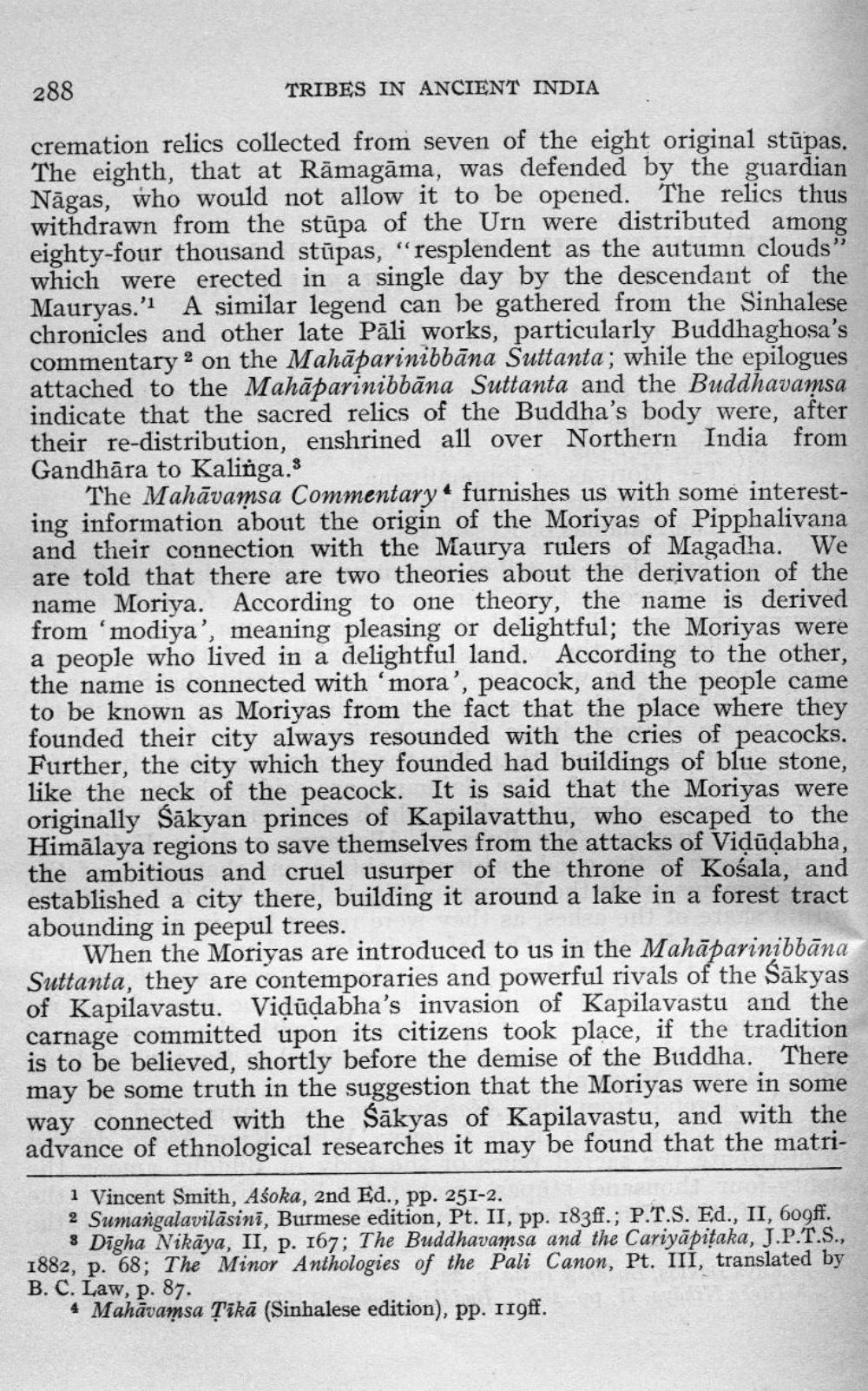________________
288
TRIBES IN ANCIENT INDIA
cremation relics collected from seven of the eight original stūpas. The eighth, that at Rāmagāma, was defended by the guardian Nāgas, who would not allow it to be opened. The relics thus withdrawn from the stūpa of the Urn were distributed among eighty-four thousand stūpas, “resplendent as the autumn clouds" which were erected in a single day by the descendant of the Mauryas.'1 A similar legend can be gathered from the Sinhalese chronicles and other late Pāli works, particularly Buddhaghosa's commentary on the Mahāparinibbāna Suttanta; while the epilogues attached to the Mahāparinibbāna Suttanta and the Buddhavamsa indicate that the sacred relics of the Buddha's body were, after their re-distribution, enshrined all over Northern India from Gandhāra to Kalinga.
The Mahāvamsa Commentary + furnishes us with some interesting information about the origin of the Moriyas of Pipphalivana and their connection with the Maurya rulers of Magadha. We are told that there are two theories about the derivation of the name Moriya. According to one theory, the name is derived from 'modiya', meaning pleasing or delightful; the Moriyas were a people who lived in a delightful land. According to the other, the name is connected with 'mora', peacock, and the people came to be known as Moriyas from the fact that the place where they founded their city always resounded with the cries of peacocks. Further, the city which they founded had buildings of blue stone, like the neck of the peacock. It is said that the Moriyas were originally Sākyan princes of Kapilavatthu, who escaped to the Himālaya regions to save themselves from the attacks of Vidūdabha, the ambitious and cruel usurper of the throne of Kośala, and established a city there, building it around a lake in a forest tract abounding in peepul trees.
When the Moriyas are introduced to us in the Mahāparinibbāna Suttanta, they are contemporaries and powerful rivals of the Sākyas of Kapilavastu. Vidūdabha's invasion of Kapilavastu and the carnage committed upon its citizens took place, if the tradition is to be believed, shortly before the demise of the Buddha. There may be some truth in the suggestion that the Moriyas were in some way connected with the sākyas of Kapilavastu, and with the advance of ethnological researches it may be found that the matri
1 Vincent Smith, Asoka, 2nd Ed., pp. 251-2. 2 Sumangalavilāsini, Burmese edition, Pt. II, pp. 183ff.; P.T.S. Ed., II, 60gff.
8 Dīgha Nikāya, II, p. 167; The Buddhavamsa and the Cariyāpitaka, J.P.T.S., 1882, p. 68; The Minor Anthologies of the Pali Canon, Pt. III, translated by B. C. Law, p. 87.
4 Mahāvamsa Țīkā (Sinhalese edition), pp. 119ff.




